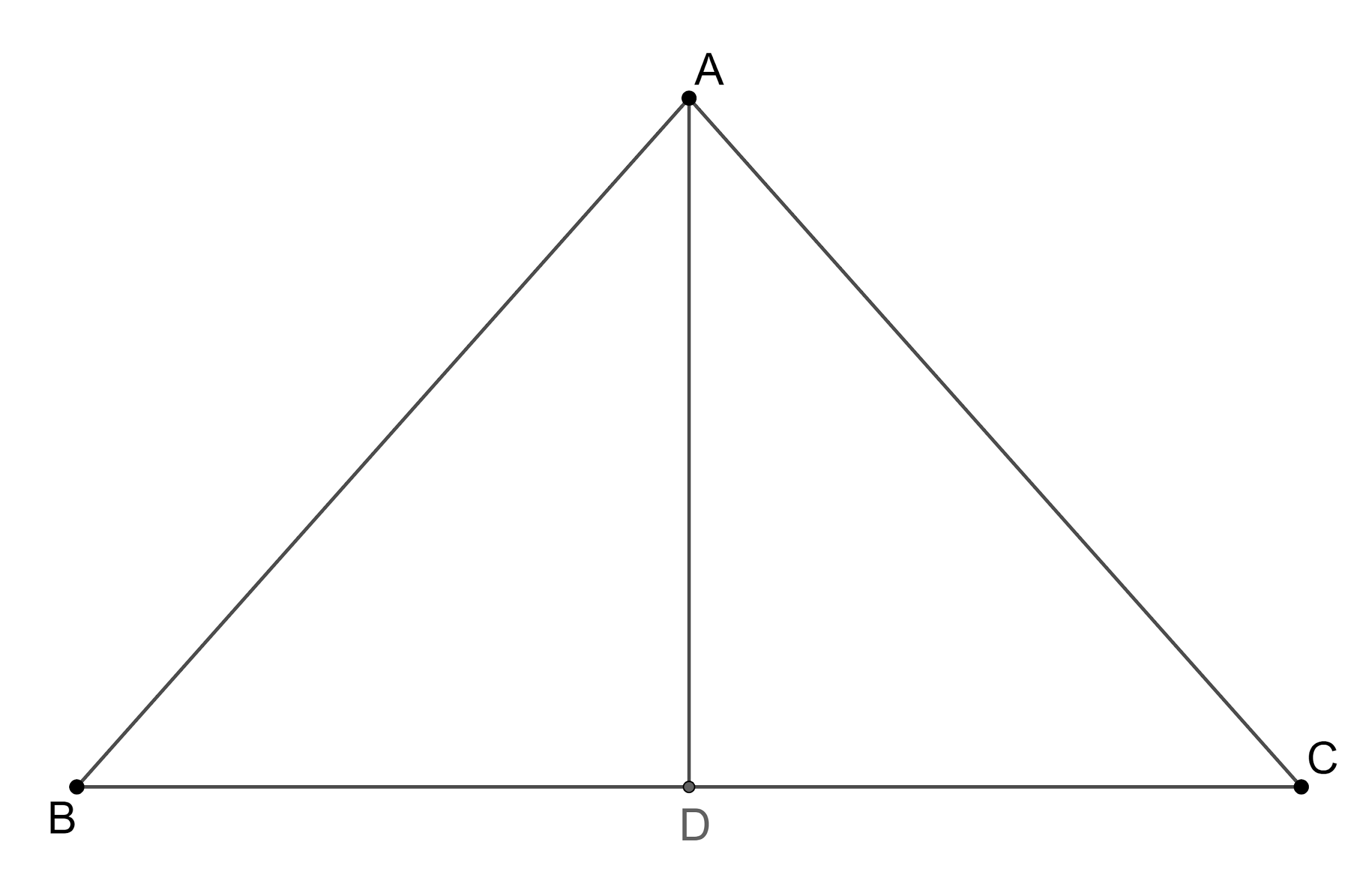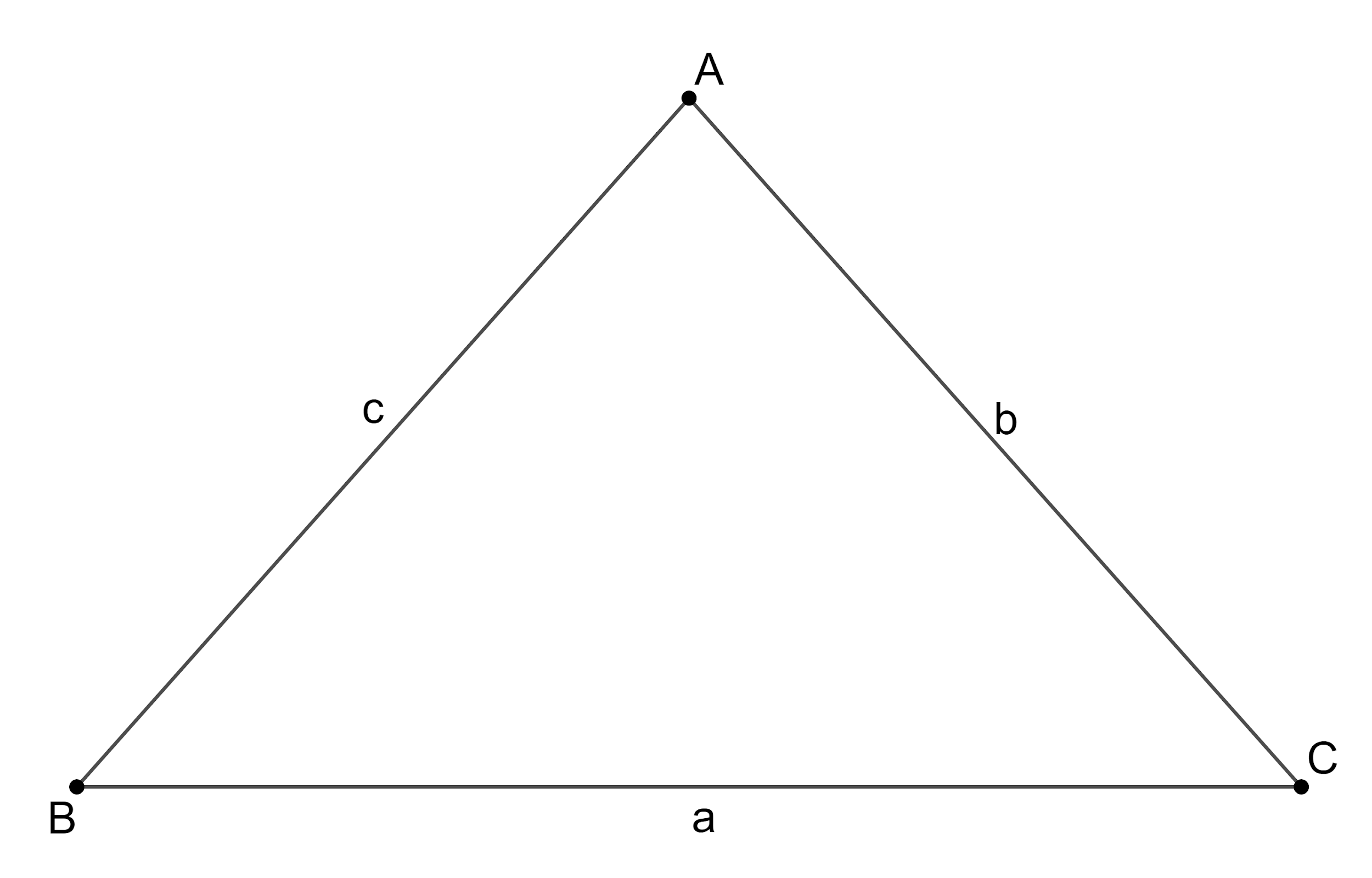
Prove that in an isosceles triangle, the angles opposite the equal sides are equal.
Answer
556.5k+ views
Hint: We start solving the problem by drawing the isosceles triangle ABC with AB and AC. We then draw a bisector of side AD to the un-equal side and then compare the triangles formed due to drawing the bisector of the third side. We then find the similar sides present in both the triangles to check whether those are similar or not. Once we find the similarity between the triangles, we equate the corresponding angles present in both triangles to complete the required proof.
Complete step by step answer:
According to the problem, we are asked to prove that in an isosceles triangle, the angles opposite the equal sides are equal.
Let us draw the figure of the isosceles triangle with equal sides AB and AC.

Let us draw a bisector of the side of the side BC which is passing through the vertex A.
From the figure, let us consider the triangles $\Delta ABD$ and $\Delta ACD$.
From both triangles, we can see that $AD=AD$ (common side).
$\Rightarrow AB=AC$ (as they were assumed as equal sides).
$\Rightarrow BD=DC$ (as AD is the bisector of side and D is the midpoint of the side BC).
So, we can see that the SSS (side-side-side) property is satisfied by both triangles. This means that the triangles $\Delta ABD$ and $\Delta ACD$ are similar.
So, we get $\Delta ABD\cong ~\Delta ACD$ which means that the corresponding angles in both triangles are equal.
So, we get $\angle BAD=\angle CAD$, $\angle ADB=\angle ADC$, $\angle B=\angle C$.
We can see that $\angle B$ and $\angle C$ are angles opposite to the equal sides in the triangle.
∴ We have proved that in an isosceles triangle, the angles opposite the equal sides are equal.
Note: We can also solve this problem as shown below:

We have $b=c$.
From cosine rule, we know that $\cos B=\dfrac{{{a}^{2}}+{{c}^{2}}-{{b}^{2}}}{2ac}$ and $\cos C=\dfrac{{{a}^{2}}+{{b}^{2}}-{{c}^{2}}}{2ab}$.
Now, let us find $\cos B$.
So, we have $\cos B=\dfrac{{{a}^{2}}+{{c}^{2}}-{{b}^{2}}}{2ac}$.
$\Rightarrow \cos B=\dfrac{{{a}^{2}}+{{b}^{2}}-{{b}^{2}}}{2ab}$.
$\Rightarrow \cos B=\dfrac{{{a}^{2}}}{2ab}$.
$\Rightarrow \cos B=\dfrac{a}{2b}$ ---(1).
Now, let us find $\cos C$.
So, we have $\cos C=\dfrac{{{a}^{2}}+{{b}^{2}}-{{c}^{2}}}{2ab}$.
$\Rightarrow \cos C=\dfrac{{{a}^{2}}+{{b}^{2}}-{{b}^{2}}}{2ab}$.
$\Rightarrow \cos C=\dfrac{{{a}^{2}}}{2ab}$.
$\Rightarrow \cos C=\dfrac{a}{2b}$ ---(2).
From equation (1) and (2), we can see that $\cos B=\cos C\Leftrightarrow \angle B=\angle C$.
Complete step by step answer:
According to the problem, we are asked to prove that in an isosceles triangle, the angles opposite the equal sides are equal.
Let us draw the figure of the isosceles triangle with equal sides AB and AC.

Let us draw a bisector of the side of the side BC which is passing through the vertex A.
From the figure, let us consider the triangles $\Delta ABD$ and $\Delta ACD$.
From both triangles, we can see that $AD=AD$ (common side).
$\Rightarrow AB=AC$ (as they were assumed as equal sides).
$\Rightarrow BD=DC$ (as AD is the bisector of side and D is the midpoint of the side BC).
So, we can see that the SSS (side-side-side) property is satisfied by both triangles. This means that the triangles $\Delta ABD$ and $\Delta ACD$ are similar.
So, we get $\Delta ABD\cong ~\Delta ACD$ which means that the corresponding angles in both triangles are equal.
So, we get $\angle BAD=\angle CAD$, $\angle ADB=\angle ADC$, $\angle B=\angle C$.
We can see that $\angle B$ and $\angle C$ are angles opposite to the equal sides in the triangle.
∴ We have proved that in an isosceles triangle, the angles opposite the equal sides are equal.
Note: We can also solve this problem as shown below:

We have $b=c$.
From cosine rule, we know that $\cos B=\dfrac{{{a}^{2}}+{{c}^{2}}-{{b}^{2}}}{2ac}$ and $\cos C=\dfrac{{{a}^{2}}+{{b}^{2}}-{{c}^{2}}}{2ab}$.
Now, let us find $\cos B$.
So, we have $\cos B=\dfrac{{{a}^{2}}+{{c}^{2}}-{{b}^{2}}}{2ac}$.
$\Rightarrow \cos B=\dfrac{{{a}^{2}}+{{b}^{2}}-{{b}^{2}}}{2ab}$.
$\Rightarrow \cos B=\dfrac{{{a}^{2}}}{2ab}$.
$\Rightarrow \cos B=\dfrac{a}{2b}$ ---(1).
Now, let us find $\cos C$.
So, we have $\cos C=\dfrac{{{a}^{2}}+{{b}^{2}}-{{c}^{2}}}{2ab}$.
$\Rightarrow \cos C=\dfrac{{{a}^{2}}+{{b}^{2}}-{{b}^{2}}}{2ab}$.
$\Rightarrow \cos C=\dfrac{{{a}^{2}}}{2ab}$.
$\Rightarrow \cos C=\dfrac{a}{2b}$ ---(2).
From equation (1) and (2), we can see that $\cos B=\cos C\Leftrightarrow \angle B=\angle C$.
Recently Updated Pages
Two men on either side of the cliff 90m height observe class 10 maths CBSE

What happens to glucose which enters nephron along class 10 biology CBSE

Cutting of the Chinese melon means A The business and class 10 social science CBSE

Write a dialogue with at least ten utterances between class 10 english CBSE

Show an aquatic food chain using the following organisms class 10 biology CBSE

A circle is inscribed in an equilateral triangle and class 10 maths CBSE

Trending doubts
Why is there a time difference of about 5 hours between class 10 social science CBSE

Write a letter to the principal requesting him to grant class 10 english CBSE

What is the median of the first 10 natural numbers class 10 maths CBSE

The Equation xxx + 2 is Satisfied when x is Equal to Class 10 Maths

Which of the following does not have a fundamental class 10 physics CBSE

State and prove converse of BPT Basic Proportionality class 10 maths CBSE




